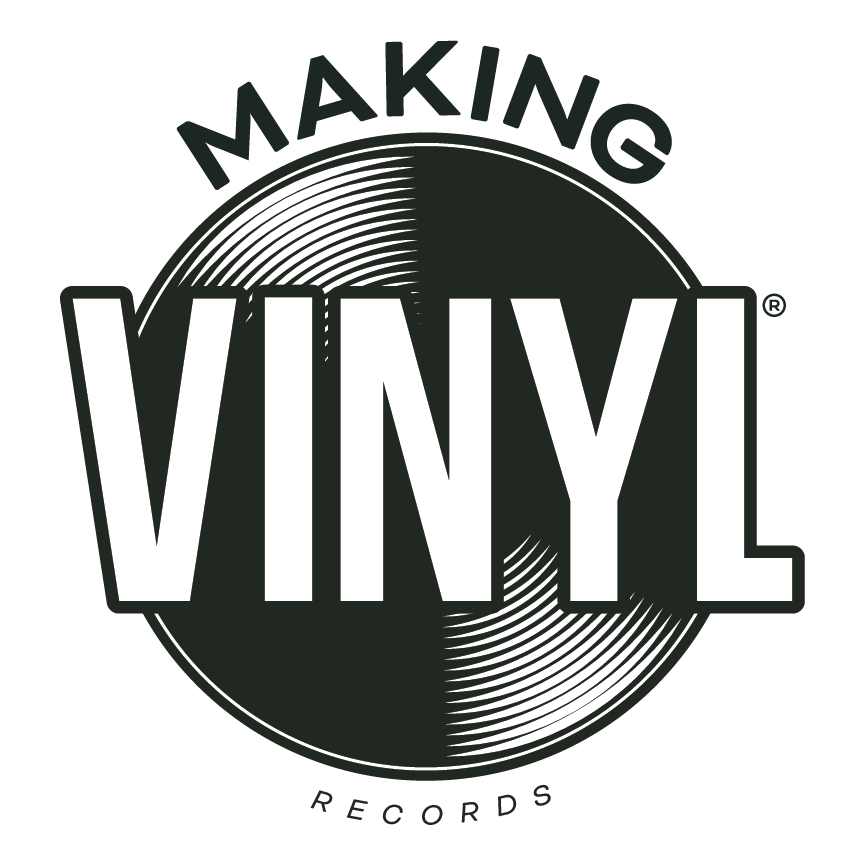New trade advocacy group, the Vinyl Record Manufacturers Association, is establishing best practices and standards.
Two recent online articles ushered in the new year with headlines that the vinyl boom could be over because the record industry couldn’t keep up with consumer demand. The media loves these types of headlines for their pass-along potential in that they make good clickbait. But from my perspective, they are hardly rooted in reality.
“Did the Music Business Just Kill the Vinyl Revival?” makes generalizations based on faulty assumptions that fail to recognize the resilience and the massive undertaking to return in 2022 the format (which most observers thought was dead in buried early three decades ago) to the same 1 billion level it achieved in 1986, according to the Record Industry Association (RIAA). An article in TechRadar takes a more measured approach, though the headline reads like clickbait.
Those articles provide a simplistic view that would leave the impression the industry has come to a crashing halt. Nothing could be further from the truth, and the TechRadar article acknowledges the recent strides in improving vinyl manufacturing bottlenecks as existing large pressing plants have substantially expanded their capacity. In addition, new facilities around the world have started to manufacture records. These and other articles are based on sales reports from trade organizations and research companies that don’t disclose methodologies, but generally underreport the volume of discs being pumped out, compared with record industry organization Making Vinyl’s pressing plant reports.
These pieces also don’t address the mounting challenges the industry has faced in terms of materials shortages and subsequent price hikes, and global supply chain issues. Nevertheless, both brick-and-mortar record and e-commerce stores are full of new vinyl product, thanks to pressing plants working as fast as they can to pump out discs.
Misperceptions about vinyl that go viral also partly fuel the advocacy mission of the Vinyl Record Manufacturers Association (VRMA), which held its inaugural members’ meeting in December 2022 in Dallas, Texas. Hosted by nearby manufacturer Hand Drawn Pressing, the meeting was attended by 27 companies from across the globe and others involved in the vinyl record supply chain.

Packing records at Hand Drawn Pressing. Courtesy of Hand Drawn Pressing.
VRMA’s stated mission is to establish best practices “through collaboration, advocacy, standardization, and education,” and to “provide communications concerning various issues and opportunities related to other technologies that may emerge.” Perhaps that will include setting the press straight on what’s really happening.
The December meeting resulted in the creation of the QC (Quality Control) Training Manual, which is planned to be released within the first quarter of 2023. That document will be followed by a Press Operator Manual that pressing plants can use to train new employees, which should prove to be particularly useful for the number of new pressing plants and their employees’ learning curves. A member-helping-member program was also launched, where members of the organization can support each other with materials, immediate production assistance and even with supplying spare parts.
The VRMA comprises more than 30 companies from every level of vinyl production: record labels, lacquer cutting, electroplating, the steps before pressing and mastering the records, printmakers, equipment manufacturers, brokers, raw material suppliers, and even logistics service providers.
This nascent association, dedicated to the rebirth of vinyl pressing during the digital age, offers a spirit of cooperation that was not seen in the first decade or two of compact disc manufacturing. That era was characterized by backstabbing and price gouging among service suppliers, which is why the CD quickly devolved into a commodity that ultimately made profits not easily attainable.
“The CD industry was dramatically different [than vinyl] because it was also a price-driven industry,” VRMA executive director Bryan Ekus pointed out. Ekus and I co-founded Making Vinyl, the B2B conference focused on the rebirth of the entire vinyl business, not just manufacturing. “People were competing on [wholesale] price for tens of cents to get particular orders,” added Ekus, who previously ran the MEDIA-TECH Association, which was formed in 2001, well into CD’s lifespan. That group was more focused on new technology than cooperation.
VRMA intends not to make such a mistake, with a mentality that everyone wins and there’s apparently enough business to go around, while recognizing that the various players all face a lot of challenges.
“CDs came from a different thought process top-down from the majors than when vinyl came back up,” agrees VRMA president Dustin Blocker, co-owner of Hard Drawn Pressing. “Vinyl is very bootstrapped.” The eagerness to share information came out of it being a dying format for so long. “All the folks that were [still] doing it for all those decades were very excited to share information just to keep it alive because it was their baby. That’s carried to [all of] us now; it’s still not that big corporate animal. I think that’s what has given it legs from the community side.”

Inspecting a disc. Courtesy of Hand Drawn Pressing.
Blocker added: “What we do is so nuanced, and manufacturing records is so technically difficult on every level. Electroplating [for example] has so many challenges that pressing doesn’t have, and I would venture to guess that [about] printing and PVC (the material used to make records), and then making parts and molds. I think [cooperation on] things of that nature is much-needed. I see VRMA as being action-driven for the supply chain.”
VRMA’s press operator manual incorporates information from legacy pressing machines such as SMT and Hamilton, to current equipment suppliers Viryl and “How you make good records is not machine-specific. Holistically, you’re looking at [everything from] temperatures to how [vinyl] flows through a press, [which is] is not specific to a press,” Blocker explains.
VRMA’s QC manual identifies what causes particular problems or failures, such as warpage. The organization will also be building manuals around other areas, including electroplating and disc cutting, notes VRMA vice president Yoli Mara, co-owner of Welcome to 1979, a Nashville-based recording, mastering and electroplating facility. “We’re working on a grading system before the [records] go out the door,” Mara comments, adding that it’s helpful to be able to develop such manuals in cooperation with pressing plants, “so anyone on our team can have the same opinion on it.”
VRMA is also working with Making Vinyl on creating a SPARS-like (Society of Professional Audio Recording Services) coding system for vinyl that will help consumers determine whether the record they’re buying is truly analog cut from the original tape or mastered from a digital source, as well as identifying which plant pressed it. VRMA will be holding its next member meeting at the Making Vinyl conference in Minneapolis this June 7 – 8, where more information about such a coding system is expected to be announced.
Blocker points out that VRMA’s four pillars are collaboration, standardization, education, and advocacy. Regarding the latter, “sometimes you can’t stay quiet about it.” Depending upon which state is involved, advocacy could mean lobbying government. “In New Jersey, you have to have a boiler guy, but not in Texas. There are chemical restrictions that aren’t in Tennessee or Texas, or they can’t recycle nickel or PVC in certain states. As sustainability becomes a bigger issue, perhaps [these concerns will have to be addressed} on the federal level.”
An important area that came up in the Dallas meeting, Blocker adds, was the need for an ERP (Enterprise Resource Planning) system to “know where your stuff is in the warehouse.”
Another need for the vinyl industry at large is a better way to quantify the volume of records actually being produced, instead of the guesses that are often taken as gospel by the mainstream media.
Luminate (formerly known as MRC Data and SoundScan) reported 2022 sales of 43.5 million LPs, up 4.2 percent from 41.7 million in 2021. When asked about its methodology for reporting vinyl sales, Luminate offered this explanation:
“Overall Luminate works with more than 500 sources of data to include streaming/global streaming, physical sales and more. In physical formats we cover CD, LP and cassettes. The Vinyl store strata is broken into several categories that span digital and chain; anything that would end up in a Billboard chart in the US comes through Luminate and the main categories are…Chain , Mass Merchant, Indie, Internet Mail Order [and] Non-Traditional.”
What Luminate isn’t stating is that their numbers are based on estimates and weighted projections. To the media, 4.2 percent is perceived as “flat growth,” which is unlikely based on recent anecdotal evidence.
Both Luminate’s numbers for sell-through vinyl sales and those from the RIAA for vinyl shipments should also be viewed under the lens that because retailers cannot return unsold LPs, they’re extremely careful to buy only what they are fairly confident will sell with consumers.
“The big boys are battling each other, and they’re going to continue adding more and more [pressing machines],” said Blocker, referring to United Record Pressing in Nashville, GZ Vinyl in the Czech Republic, and Optimal Media in Germany, as well as other sizable operations. “Knowing the growth that’s happening in and around Nashville and Memphis, those guys alone are putting out more than what the stats are reporting, not to mention the 150 or 160 other plants globally,” Blocker said.
But to go back to those articles cited at the beginning of this piece, you would never know of the robust sales records being set, such as the RIAA’s estimated $1 billion spent in 2021 in the US on new vinyl, the first time that level was reached since 1986.
A more accurate pulse on the industry ran in the Winter 2022 issue of No Depression in an article titled “Vinyl, Interrupted: Roots Musicians Navigate Production Delays and Find Creative Alternatives,” reflecting the type of cooperation that the VRMA is building. The musicians interviewed, including Jarrod Dickenson, Rachel Sumner, and Andrew Duhon, as well as the pressing companies they’re working with around the country, emphasized the efforts that artists and manufacturers are making in getting their records onto their fans’ turntables.
Header image: inside Hand Drawn Pressing, courtesy of Hand Drawn Pressing.



